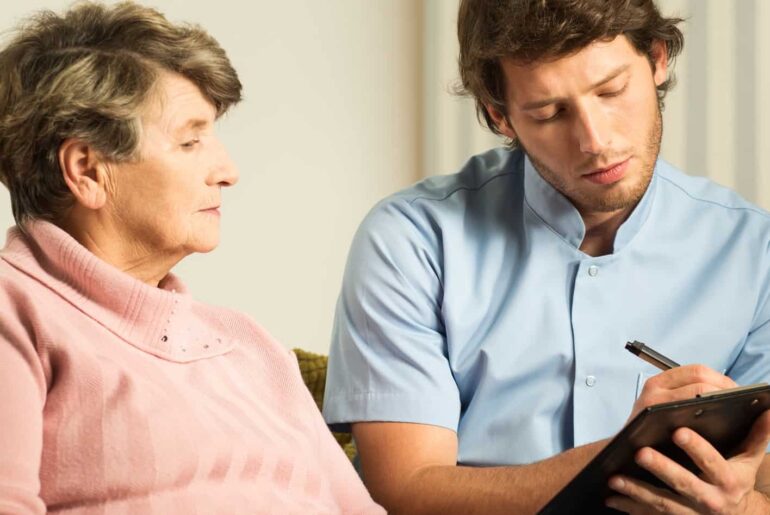As Covid-19 has not yet been contained, but economic activities have resumed, risk group professionals of the disease are in danger. These vulnerable workers have a double fear: of being infected with the virus during the course of their activities, or of their names being the first to appear on the list of cuts to employees to reduce the expenses of organizations.
These professionals face great fears and dilemmas at this time. If, on the one hand, they want to have their lives protected, on the other, they fear that their economic stability will be undermined. This group’s concern is no wonder. Medical expenses represent a good portion of an organization’s expenses and they also saw many colleagues in that risk group being fired right after the pandemic announcement.
The people management area has, therefore, a great challenge ahead to balance these two factors in the resumption program, idealizing a policy that covers both physical and psychological aspects to protect the most vulnerable.
Who are risk group professionals?
According to information released by the World Health Organization (WHO), they belong to the Covid-19 risk group with chronic diseases such as diabetes and hypertension, asthma and individuals over 60 years of age.
In a study published in British Medical Journal (BMJ) , the researchers evaluated 113 people who died and another 161 who recovered from the infection in the city of Wuhan, China, where the epidemic was triggered. In the survey, it was found that 48% of the deceased had high blood pressure and 21% had diabetes. The average age among the deceased was 61 years.
Although not addressed in depth in the study, other problems are related to complications due to the new coronavirus, such as hematological diseases, chronic kidney disease, cancer and obesity. WHO also places pregnant women in the care group.
As the tests are far from universal, official reports are likely to underestimate the extent of the pandemic, but it is clear that older adults are at greater risk of having or already having serious Covid-19-related illnesses.
Job vulnerability
At the same time, millions of workers aged 65 and over in the pre-pandemic economy have been unable to work from home. The main barrier was the technological knowledge of these professionals. If for professionals accustomed to the new technologies it was already difficult the forced adaptation to the home office, imagine for those who do not easily navigate between the world off and online.
Given this difficulty, many professionals in this age group were even fired in the first post-pandemic days. But from the point of view of the labor market, elderly professionals or others in the Covid-19 risk group are not alone. Blacks, liberal professionals and low-skilled workers join the community of vulnerable people, because they worked in industries that were strongly affected by the crisis, such as retail trade and tourism.
A report released by Bureau of Labor Statistics of the USA, before the pandemic, already revealed the difficulty of distance work for these groups. According to the study, of the workers who worked at home base, only 25.5% were over 65 years old; 7% were black and only 6% had completed their studies by the eighth grade of elementary school.
Prejudices raised
Added to all these fears is a new problem that arose with the pandemic: prejudice against some risk groups. Fake news on social media and people’s intolerance towards social isolation has led many to discriminate against older people, residents of the periphery and even health professionals.
Not infrequently, we saw people complaining about the elderly people walking on city streets, or people from the periphery who, given their housing situation, were also unable to follow the model of social isolation.
Thus, it is a priority for HR leaders in the pandemic to take all these elements into account in the recovery program so that these damages are mitigated. So before you start planning, answer the following questions:
- Do older workers and other risk groups want to return to the workforce? Will your health or new regulations allow? Will a rehabilitation program be necessary?
- If these workers wish to return to work, will they be subject to some form of discrimination?
- How do these professionals readjust to the workplace after isolated periods?
- Is there a digital recycling program for professionals who were unable to work remotely in the pandemic period
- Is there flexibility to allow workers to return on a part-time basis?
- In the case of pregnant women, is there a special program for them before and shortly after delivery?
In addition to these issues, take these two tips that we have separated for you into consideration:
Invest in generational connectivity
The elderly and people with low qualifications are improving their technological skills and gaining experience using online platforms. Before this pandemic, it was documented that 75% of people over the age of 65 go online every day.
Motivation and opportunities to learn were growing, and then the distance and social shelter created a “sink or swim for good” moment for many reluctant or unskilled users. Therefore, take this into account in the resumption program by investing in this generational and even cultural connectivity among the professionals in your organization.
Physical and psychological well-being
We entered this pandemic fearing the negative effects of social isolation, in particular, the lack of social connections. Covid-19 shed light on psychological illnesses that had been on the rise for some time, such as anxiety and depression.
Numerous news and resource sites focus on the risks and consequences of social disconnection and present strategies to combat isolation. Do not let this shuttlecock fall when planning to return to work in the “new conditions”. Invest in physical and psychological well-being programs that can help people in vulnerability to get their breath back when resuming work.
If you were interested in this article, also read a story with tips on how to deal with mental health in the resumption program.




